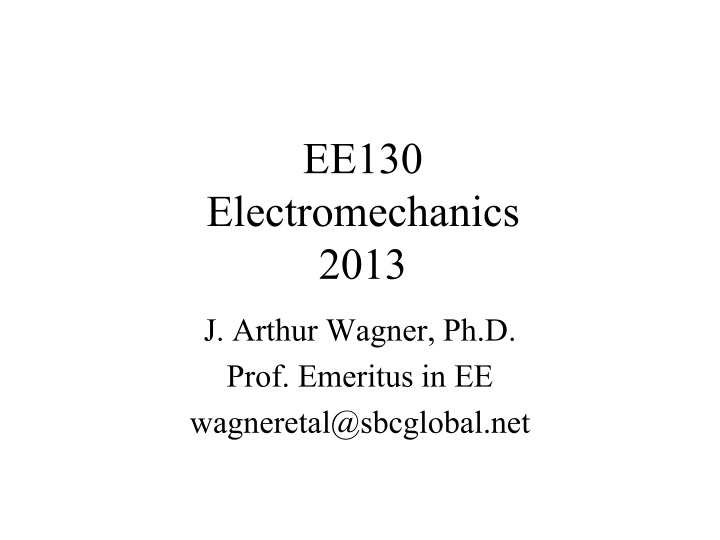
Electromechanics 2013: Understanding Voltage Link Systems
Delve into the principles of voltage link systems in electromechanics, exploring topics like polarity reversal, PPU efficiency, stepper motor drivers, and PWM modulation for enhanced understanding.
Download Presentation

Please find below an Image/Link to download the presentation.
The content on the website is provided AS IS for your information and personal use only. It may not be sold, licensed, or shared on other websites without obtaining consent from the author. If you encounter any issues during the download, it is possible that the publisher has removed the file from their server.
You are allowed to download the files provided on this website for personal or commercial use, subject to the condition that they are used lawfully. All files are the property of their respective owners.
The content on the website is provided AS IS for your information and personal use only. It may not be sold, licensed, or shared on other websites without obtaining consent from the author.
E N D
Presentation Transcript
EE130 Electromechanics 2013 J. Arthur Wagner, Ph.D. Prof. Emeritus in EE wagneretal@sbcglobal.net
Fig. 4.1 Voltage-link system Vd is the voltage- link, or dc-bus voltage. Vd sits between two AC systems. utility + V M d switch-mode converter Rectifier Vd does not reverse because transistors can block voltage with only one polarity. controller
Questions Does the voltage link reverse in polarity? Why?
Fig. 4.2 Switch mode converters ac motor ac motor dc motor dc motor ai ai + + + + io io a a + + + + n n a a d V d V V V b b ea ea vo vo d d b b c c - - - - ( ) a ( ) a ( ) b ( ) b Discuss figures and switching e.g. Sw a up down up down . and sw b down only e.g. Sw a up down up down sw b and sw c down only PPU efficiency about 95 %
Questions How do you define PPU efficiency? What is a typical value for PPU efficiency?
Allegro stepper motor driver Trace power pole for one phase
Prototype board Driver chip 12 V power supply = bus voltage capacitor note large traces
Fig. 4.3 Switching power-pole The switch contacts up and contacts down. Never open or floating . qa is a logic signal. The inductance keeps the current flowing (with some ripple).
Questions What keeps the current flowing?
Fig. 4.4 PWM of the switching pole The logic signal is up = 1 and down = 0. The period Ts is fixed. Tup varies, i.e. the Pulse Width is Modulated (PWM) Note ida stops, i.e. goes to zero, ia continues.
Question Suppose Ts = 0.1 ms and Tup = 0.08 ms while Vd is applied to the load. What is the average voltage va?
Average voltage, and turns ratio
Fig. 4.5 Bi-directional power flow a FET sets a current direction, diode continues the flow. q turns one FET ON, and other FET OFF a bemf in the motor bucks (is against) Vd current flows into Vd and boosts its voltage
Question Name a situation where the boost function is used.
Fig. 4.6 Bidirectional switching power pole The left FET and diode operate together when the current is flowing out. Question: Tell me how the right diode and FET operate together.
Fig. 4.7 Switching-cycle average Now . always flows and stops flowing This transformer steps down the voltage and steps up the current.
Question Explain this statement: always flows and stops flowing
Fig. 4.8 PWM Waveforms in a switching power pole Point out 1 cycle and one cycle. When vtri < vcntrl,a we have an UP, otherwise a DOWN.
Question How does vcntrl,a vary with respect to vtri?
Fig. 4.9 Switching power-pole and its duty-ratio control pole-A ( ) t dA i + ( ) t A i A voltage port V + d current port ( ) t v AN N , ( ) c A v t ( ) t q A ( ) t v tri PWM-IC We add onto the drawing the model which generates the switching signal qa (Incidentally, we show variables as time functions.)
Question With respect to vcntrl,a and vtri, when is qa UP and when is qa DOWN?
Homework Chapter 4, Due next Tuesday Problems 4.1, 4.2, 4.3, 4.4
